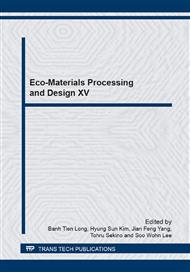p.213
p.217
p.221
p.225
p.231
p.235
p.239
p.243
p.248
Antibacterial Properties Evaluation of a Novel Polyurethane-Based Root Canal Sealer
Abstract:
Elimination of microorganisms from the root canal system and the prevention of subsequent reinfection are of importance for long-term endodontic treatment. The application of a sealer with antibacterial properties may reduce the reinfection and improve the success rate of the root filling treatment. The aim of this paper is to evaluate the antibacterial properties of a novel root canal sealer based on injectable self-curing polyurethane with silver phosphate (PU/Ag3PO4). The antibacterial abilities were assessed by direct contact test, anti-bacterial adhesion assay and bacteriostatic rate test. The results show that the fabricated PU/Ag3PO4 sealer can completely inhibit the bacterial growth and prevent bacterial adhension effectively. The bacteriostatic rate is 93.6% and 98.1% when the bacteria incubated with PU/Ag3PO4 sealer for 7 and 24h respectively. The strong antibacterial abilities suggest that PU/Ag3PO4 sealer has great application potential in the field of root canal filling.Key words: Root canal sealer, polyurethane, silver phosphate, antibacterial properties, direct contact test
Info:
Periodical:
Pages:
231-234
Citation:
Online since:
October 2014
Authors:
Price:
Сopyright:
© 2015 Trans Tech Publications Ltd. All Rights Reserved
Share:
Citation:


